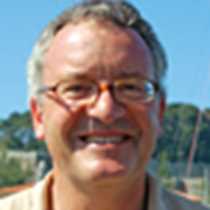Orkney
Orkney is a paradise for both naturalists and archaeologists. An archipelago of half a dozen low-lying islands just six miles off the Northeast coat of Scotland. We divided our day between the two interests, with nature taking precedence in the morning and the afternoon given over to archaeology.
Shapinsay Island has a population of just a few hundred and its livelihood is dominated by Balfour Castle, a baronial pile lovingly tended by the Zawadski family. The extensive walled gardens have been in continuous use for over 150 years and are as productive as they are attractive. We were able to sample at least some of the local produce, rhubarb jam for the freshly baked scones, served to us at the castle for morning tea. On nearby Helliar Holm earlier in the day, our naturalists had led a walk to discover the nesting sites of lesser black-backed gulls, herring gulls, eider ducks, graylag geese and oystercatchers, the latter noted for their evocative piping call. For this group hot tea and scones were particularly welcome.
In the afternoon we toured Mainland (as the larger island is known) to visit archaeological sites of world significance. Skara Brae Neolithic village was uncovered by a storm in 1850 and subsequently excavated by the doyen of Scottish archaeologists, Gordon Childe. Adjacent to this city of the living was Maes Howe, the house of the dead: a spectacular burial mound that appears to have solar alignment. At the Ring of Brogar, a majestic stone circle, we came as close as we can to the belief system of this culture. These preliterate people could not read books, but they could clearly read the night sky, measure, construct and massively organize. They may have been our technological inferiors – they appear to have realized these monuments without the use of the wheel – but they were by no means our intellectual inferiors. We must beware of the enormous condescension of posterity.
Orkney is a paradise for both naturalists and archaeologists. An archipelago of half a dozen low-lying islands just six miles off the Northeast coat of Scotland. We divided our day between the two interests, with nature taking precedence in the morning and the afternoon given over to archaeology.
Shapinsay Island has a population of just a few hundred and its livelihood is dominated by Balfour Castle, a baronial pile lovingly tended by the Zawadski family. The extensive walled gardens have been in continuous use for over 150 years and are as productive as they are attractive. We were able to sample at least some of the local produce, rhubarb jam for the freshly baked scones, served to us at the castle for morning tea. On nearby Helliar Holm earlier in the day, our naturalists had led a walk to discover the nesting sites of lesser black-backed gulls, herring gulls, eider ducks, graylag geese and oystercatchers, the latter noted for their evocative piping call. For this group hot tea and scones were particularly welcome.
In the afternoon we toured Mainland (as the larger island is known) to visit archaeological sites of world significance. Skara Brae Neolithic village was uncovered by a storm in 1850 and subsequently excavated by the doyen of Scottish archaeologists, Gordon Childe. Adjacent to this city of the living was Maes Howe, the house of the dead: a spectacular burial mound that appears to have solar alignment. At the Ring of Brogar, a majestic stone circle, we came as close as we can to the belief system of this culture. These preliterate people could not read books, but they could clearly read the night sky, measure, construct and massively organize. They may have been our technological inferiors – they appear to have realized these monuments without the use of the wheel – but they were by no means our intellectual inferiors. We must beware of the enormous condescension of posterity.




